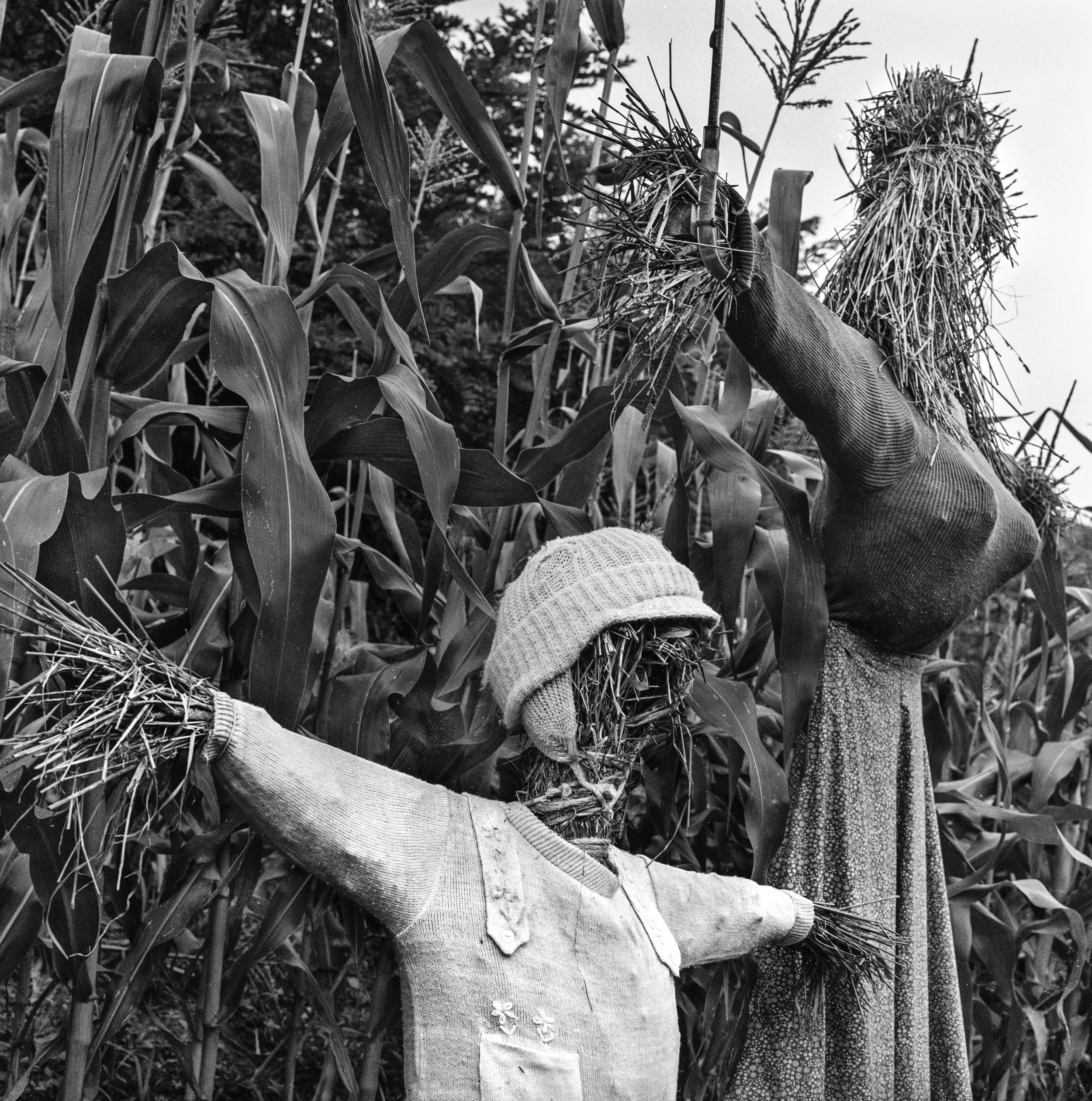
























Your Custom Text Here
I arrived in the Appalachian Mountains of North Carolina as a student decades ago in early childhood education and was deeply enchanted with the landscape. I would go into the hills to learn the indigenous plants there and would spend time with the people who called this their home. In early spring, a seed was planted, a garden began, and vegetables became visible to provide food for the family in the early fall. As the plants grew, miraculously a scarecrow would appear in handmade form as part of their world.
From the scarecrows’ physical manifestation, invisible stories arose for me. Some stood alone while others were grouped in a family, with a mother and child and a father holding his son’s hand. Had this family made the garden scarecrows in their own image? Whose tattered garments had been chosen to clothe the scarecrows, and why? In remote Appalachia, art making was thriving in its most basic form.
Scarecrows have been around almost as long as civilization itself. In ancient Egypt, farmers protected their wheat fields from quail, and the Greeks scared birds away from their vineyards with carved wooden statues. Both Native Americans and medieval Britons used human beings to shout birds away from their crops. In Appalachia I witnessed this late 20th century version of history manifest itself in the gentlest of ways. People there found a peaceful solution to a basic conflict between humans and nature.
After a decade, when I bought my first medium format camera, I returned to fix theses impressions in black and white film. All suggest the intertwining of humans and the landscape they inhabit. Together they create a picture of a way of life, crafted by a particular culture while striking a balance between their people and their land.
I arrived in the Appalachian Mountains of North Carolina as a student decades ago in early childhood education and was deeply enchanted with the landscape. I would go into the hills to learn the indigenous plants there and would spend time with the people who called this their home. In early spring, a seed was planted, a garden began, and vegetables became visible to provide food for the family in the early fall. As the plants grew, miraculously a scarecrow would appear in handmade form as part of their world.
From the scarecrows’ physical manifestation, invisible stories arose for me. Some stood alone while others were grouped in a family, with a mother and child and a father holding his son’s hand. Had this family made the garden scarecrows in their own image? Whose tattered garments had been chosen to clothe the scarecrows, and why? In remote Appalachia, art making was thriving in its most basic form.
Scarecrows have been around almost as long as civilization itself. In ancient Egypt, farmers protected their wheat fields from quail, and the Greeks scared birds away from their vineyards with carved wooden statues. Both Native Americans and medieval Britons used human beings to shout birds away from their crops. In Appalachia I witnessed this late 20th century version of history manifest itself in the gentlest of ways. People there found a peaceful solution to a basic conflict between humans and nature.
After a decade, when I bought my first medium format camera, I returned to fix theses impressions in black and white film. All suggest the intertwining of humans and the landscape they inhabit. Together they create a picture of a way of life, crafted by a particular culture while striking a balance between their people and their land.